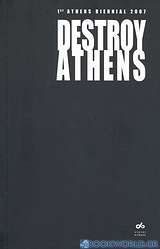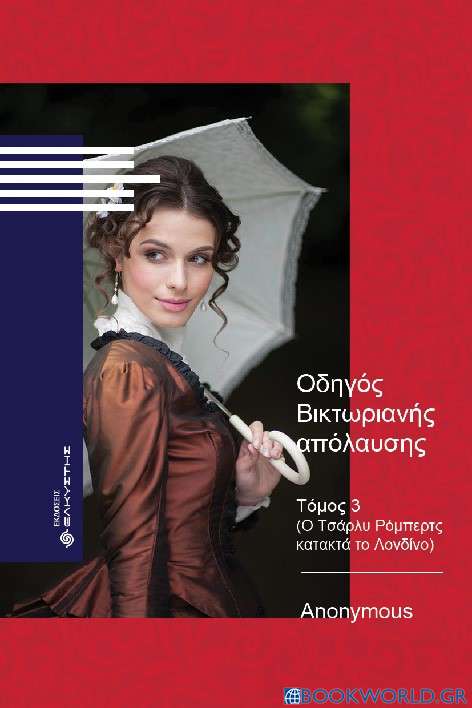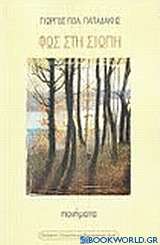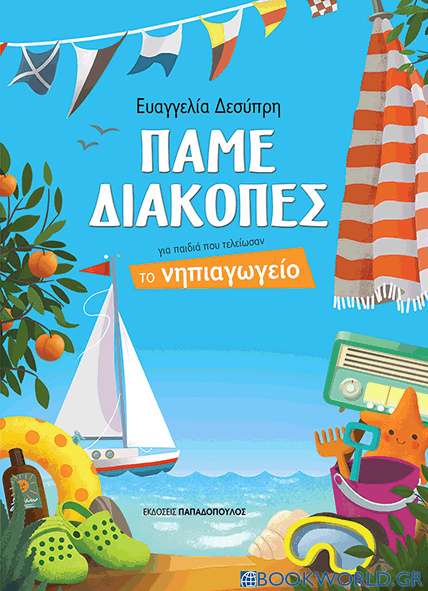
An eclipse of narratives is perceived by many. The reason usually given has to do with this age, a "relativist" or "administrative" age, in which great narratives might appear commonplace, false, or -what is worse- obsolete. And it is true that the fields of public discourse -politics, science, philosophy- largely appear to renounce them. We live in a world where, apparently, the great, the dark, the nebulous issues of existence are to an ever increasing degree objects of theoretical investigation.
In that sense, contemporary art is a privileged field. Although it often seems to have spent much time claiming the capabilities of other disciplines, art continues -in the greatest of its manifestations, at least- to maintain this privilege: it can speak about all that no other can touch, in a way that no-one can imagine before being faced with it. Great narratives, perhaps more than in any other time, belong to art.
This privilege is certainly neither self-evident nor obvious. Even when an artwork manages to conquer it, at least one more thing is necessary so that the work can acquire its meaning. That is the commitment of the viewer, the possibility of his integration into the narrative, in a way that the monologue of the artwork can also become the monologue of the viewer, like a twofold declamation.
The incorporation of such narratives into a wider one is a challenge. From a certain point of view it amounts to hubris. One would not struggle to find many who would consider something like this morally unacceptable. In fact, to be specific, the artists who participate in this exhibition are possibly not the ones one would expect to see -at least not all of them together. Some of them are so different in their objectives and their manner that it would be difficult to imagine beforehand how they might be integrated into the same narrative.
We suggest, however, that a narrative is the mode of articulation that can ensure the following: Every artwork is by itself a complex of multi-faceted readings, which allows us to dive into the chasm that opens before us and identify diversely with it. At the same time, there still exists a basic thread, which we follow, a wide reading that leads us step by step across the course of the story, and so to a particular commitment to the works, to a deep identification with them.
"Destroy Athens" then tells a story. [...]
If there is something that 'Destroy Athens' is not, then it is not a survey.
It does not aim at being a barometer of artistic production at this moment nor teach anybody what is significant today in contemporary art or in the geopolitical circumstances. It does not want to express an opinion about what is important, poignant, interventional or new, it does not wish to argue in favour of a practice or against another, it does not wish to predict where things are heading right now or where they will be tomorrow.
It is a story. We do hope that as a story it has meaning between the moment it begins and the moment it ends.
(excerpt from the curators' foreword: Xenia Kalpaktsoglou, Poka-Yio & Augustine Zenakos)
| Τίτλος βιβλίου: | Destroy Athens | ||
|---|---|---|---|
| Υπότιτλος βιβλίου: | 1st Athens Biennial 2007 | ||
| Τίτλος πρωτότυπου: | Destroy Athens: 1η Μπιενάλε της Αθήνας 2007 | ||
| Εκδότης: | Futura | ||
| Συντελεστές βιβλίου: | Συλλογικό έργο (Συγγραφέας) Σταθόπουλος, Θάνος (Συγγραφέας) Σεβαστή, Δέσποινα (Συγγραφέας) Salmon, Richard (Συγγραφέας) Ποντικάκη, Ελεάννα (Συγγραφέας) Μαρίνος, Χριστόφορος (Συγγραφέας) Μάνθου, Κωστάντια (Συγγραφέας) Λεδάκη, Ευαγγελία (Συγγραφέας) Γιαννοπούλου, Πατρίτσια (Συγγραφέας) Γεωργακοπούλου, Νεφέλη (Συγγραφέας) Demos, T. J. (Συγγραφέας) Χατζηδάκη, Όλγα (Συγγραφέας) Αργυροπούλου, Νάντια (Συγγραφέας) Ανδριωτάκης, Μανώλης (Συγγραφέας) Σαράτση, Τιτίκα-Μαρία (Μεταφραστής) Σαλταμπάσης, Δημήτρης (Μεταφραστής) Πανουργιά, Κλειώ (Μεταφραστής) Κατσώνη, Μέμη (Μεταφραστής) Ελευθερίου, Μιχάλης (Μεταφραστής) Μπίστικα, Θάλεια (Μεταφραστής) Καλπακτσόγλου, Ξένια (Επιμελητής) Poka-Yio (Επιμελητής) Ζενάκος, Αυγουστίνος (Επιμελητής) Τραμπούλης, Θεόφιλος Ξ. (Επιμελητής) | ||
| ISBN: | 9789606654572 | Εξώφυλλο βιβλίου: | Μαλακό |
| Στοιχεία έκδοσης: | 2007 | Διαστάσεις: | 23x15 |
| Σημείωση: | Catalogue for the exhibition "Destroy Athens", held in Athens from September 10th to November 18th 2007. Copyright: Athens Biennial, Non for Profit Organisation. Addresses: Georgios Voulgarakis, Nikitas Kaklamanis, Fotis Ignatiou, Pierre de Weck. Main sponsor: Deutsche Bank. | ||
| Κατηγορίες: | Γενικά Βιβλία > Καλές Τέχνες Γενικά Βιβλία > Καλές Τέχνες > Ιστορία της Τέχνης | ||
- Ανδριωτάκης, Μανώλης |
- Αργυροπούλου, Νάντια |
- Χατζηδάκη, Όλγα |
- Demos, T. J. |
- Γεωργακοπούλου, Νεφέλη |
- Γιαννοπούλου, Πατρίτσια |
- Λεδάκη, Ευαγγελία |
- Μάνθου, Κωστάντια |
- Μαρίνος, Χριστόφορος |
- Ποντικάκη, Ελεάννα |
- Salmon, Richard |
- Σεβαστή, Δέσποινα |
- Σταθόπουλος, Θάνος

Ακτσόγλου, Μπάμπης, 1954-2007
Ο Μπάμπης Ακτσόγλου γεννήθηκε το 1954 στη Θεσσαλονίκη. Μετά τις κινηματογραφικές σπουδές του στο Παρίσι, συνεργάστηκε με τα περιοδικά "Οθόνη", "Φιλμ", "Σινεμά", "Προοδευτικός Κινηματογράφος", καθώς και με τα "Κινηματογραφικά Τετράδια", που ίδρυσε μαζί με ομάδα Θεσσαλονικέων κινηματογραφόφιλων. Μετά το 1987, συνεργαζόταν αποκλειστικά με το περιοδικό "Αθηνόραμα".
Έγραψε μονογραφίες σκηνοθετών (Χίτσκοκ, Πολάνσκι, Κόπολα, Λόουζι), καθώς και μια μελέτη για το Ουέστερν.
Επιμελήθηκε την έκδοση "Le cinema grec" (Centre Georges Pompidou), καθώς και διάφορα βιβλία του Φεστιβάλ Κινηματογράφου Θεσσαλονίκης (Τζαβέλλας, Σαμπρόλ, Ντράγιερ, Μπουνιουέλ, Ιμαμούρα, Μιζογκούτσι, Αλμοδόβαρ, Γουϊντερμπότομ, Σερώ, Βέντερς, Σβανκμάγιερ, κ.ά.).
Διετέλεσε, για διαδοχικές περιόδους, υπεύθυνος προγραμματισμού του δικτύου αιθουσών "Filmcenter" του Ελληνικού Κέντρου Κινηματογράφου. Επίσης, υπήρξε, μαζί με άλλους, ιδρυτής της αλυσίδας καταστημάτων "Clip Art".
Πέθανε στην Αθήνα τα ξημερώματα της Πέμπτης 18 Ιανουαρίου 2007, σε ηλικία 52 ετών, από ανακοπή καρδιάς, κατά τη διάρκεια προγραμματισμένης νοσηλείας του στον Ερυθρό Σταυρό.
Στην ανακοίνωση του περιοδικού "Αθηνόραμα" για την απώλειά του, σημειώνεται: "Ο κόσμος του κινηματογράφου, της κριτικής, της σκέψης, του πολιτισμού, οι χιλιάδες αναγνώστες του, έχασαν έναν πολύτιμο άνθρωπο, ο οποίος αποτέλεσε σημείο αναφοράς για την ελληνική δημοσιογραφία τα τελευταία είκοσι χρόνια. Ο Μπάμπης Ακτσόγλου δεν υπάρχει πια. Η οικογένεια του "Αθηνοράματος" θρηνεί για την ξαφνική απώλεια του αγαπημένου μέλους της. [...] Ο κινηματογράφος δεν ήταν για τον Μπάμπη απλώς επαγγελματική ενασχόληση, ήταν υπόθεση ζωής. Στον ίδιο δεν άρεσαν τα μεγάλα λόγια, αλλά οι αναγνώστες του μπορούσαν εύκολα να διακρίνουν πίσω από τις κριτικές του τη βαθιά και πολύπλευρη κουλτούρα του, την ευρύτατη και βαθιά γνώση του κινηματογράφου, αλλά - και κυρίως - την ανυποχώρητη υπεράσπιση ενός κινηματογράφου που δεν είναι απλώς και μόνο καταναλωτικό προϊόν. Αντικειμενικός πάντοτε στην κριτική του, τολμούσε επανειλημμένα να πηγαίνει κόντρα στα ρεύματα της εποχής. Μπορεί να συμφωνούσες ή να διαφωνούσες με την κριτική του Μπάμπη Ακτσόγλου, ήσουν όμως πάντα βέβαιος ότι ήταν μια κριτική έντιμη, τεκμηριωμένη με σαφή κριτήρια. Σε αυτές τις ιδιότητές του οφειλόταν άλλωστε και η ιδιαίτερη, στενή σχέση που είχε διαμορφώσει με τους χιλιάδες φίλους του κινηματογράφου που διάβαζαν κάθε εβδομάδα τα κείμενα του."
- Το ουέστερν (2022)
- Μπάμπης Ακτσόγλου: Από τον "Κλέφτη ποδηλάτων" στο "Καζίνο Ρουαγιάλ" (2007)
- Wim Wenders (2006)
- Jan Svankmajer (2006)
- Ρομάν Πολάνσκι (2005)
- Το ουέστερν (2004)
- Fritz Lang (2003)
- Άλφρεντ Χίτσκοκ (2003)
- Cinemythology (2003)
- Σινεμυθολογία (2003)
- Commedia all' Italiana (2002)
- Shohei Imamura (2002)
- Carl Dreyer (2001)
- Κριτική κινηματογράφου (2001)
- Kenji Mizoguchi (2000)
- Luis Buñuel (2000)
- Το βιβλίο στο σινεμά (1999)
- Claude Chabrol (1997)
- Το γουέστερν (1988)
- Άλφρεντ Χίτσκοκ (1985)
- Φράνσις Φορντ Κόππολα (1985)
Δείτε επίσης:
Είδατε πρόσφατα:
















